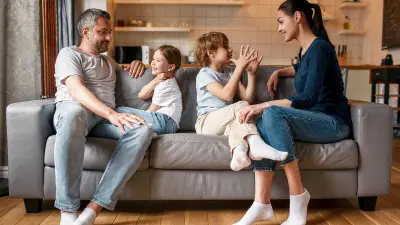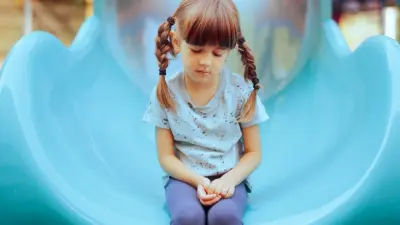Every year, the same names dominate the top of the World Happiness Report: Finland, Denmark, Norway. These Nordic countries are known not just for stunning landscapes and cozy traditions, but for raising some of the happiest, healthiest kids in the world.
But why? According to journalist and author Helen Russell, it’s not the pastries or the paid parental leave (though those don’t hurt). It’s the way they parent.
On The Happiness Lab podcast with Dr. Laurie Santos, Russell—who spent over a decade raising her children in Denmark—shares the radical, refreshing ways Nordic families approach parenting. What she discovered could change not only the way we raise our kids, but the way we live as families.
Here are 7 surprising lessons U.S. parents can learn from the Viking way of parenting.
1. Trust More—Worry Less
At the heart of Danish parenting is tillit, a deep cultural trust in people, systems, and even children.
“There’s this trust that no harm will come to [children]… that the whole community will rally around,” says Russell.
That means babies nap outside cafés in freezing weather. Toddlers handle real knives at forest school. Kids are given autonomy early, and parents gain peace of mind in return.
2. Foster Independence from the Start
Danish kids are expected to do a lot for themselves. By age two, they’re dressing themselves. By five, they’re waking up with their own alarm clocks.
“All children from the age of around five should be able to wake themselves up with an alarm clock,” said renowned Danish psychologist Yesper Juul.
Rather than hovering or micromanaging, Danish parents equip their kids with the tools—and the trust—to step up.
3. Encourage Risky Play (Yes, Really)
In the U.S., risky play can feel… risky. But in Denmark, it’s essential.
“Children who didn’t climb trees were the ones with a fear of heights,” one psychologist told Russell. “Not the ones who climbed and fell.”
From play-fighting to using tools, age-appropriate risks build resilience, confidence, and better emotional regulation—something researchers have even observed in animal studies.
4. Let Kids Be Wild and Bored—Outdoors
Danish parents don’t wait for sunny days. Kids go outside every day—rain, snow, or sleet.
“There’s no such thing as bad weather, just the wrong clothes,” says Russell. “It’s normalized. Everyone does it.”
Outdoor time is non-negotiable. So is boredom. “I wouldn’t be a writer if I hadn’t been allowed to be bored as a child,” she adds. Boredom sparks creativity, independence, and emotional growth.
5. Design for Autonomy—Not Convenience
Forget doing everything for your kids. In Denmark, parents structure the home so kids can help themselves—and the family.
“Instead of intervening, you ask: what are the obstacles to the child doing this on their own?”
This mindset turns families into teams. Kids set the table, light the candles, and tidy up—not as chores, but as contributions. “There’s no hierarchy,” Russell says. “Everyone pitches in.”
6. Redefine Success and Praise Less
Academic pressure is lower in Denmark. School starts later. Grades matter less than well-being.
“It doesn’t matter if you’re a CEO,” Russell explains. “It matters if you’re kind, balanced, and have a rich life.”
Overpraising is also avoided. Instead of putting every drawing on the fridge, Danish parents help kids develop an internal sense of worth, rooted in effort, not applause.
7. Model Boundaries Without Guilt
Danish parents are direct and guilt-free when setting limits.
“I’m tired now. I’m done parenting for today. Goodnight, I love you” is a common bedtime script.
Rather than negotiating or coaxing, they model honesty and self-respect. And instead of over-explaining, they trust kids to handle boundaries. It’s calm, clear, and science-backed: kids hear better when you don’t shout.
Parent Like A Viking
The Danish way of parenting may feel radical to U.S. families—less hovering, less pressure, less guilt. But maybe that’s exactly what many of us need.
“The goal isn’t to have the flashiest car,” says Russell. “The prize is time. That’s what children learn to value.”
When parents model balance, self-trust, and respect, kids don’t just follow—they thrive. So give yourself permission to ease up, play more, and trust that your child is more capable than you think.
Because raising happy kids doesn’t mean doing more, sometimes, it means doing less—and doing it like a Viking.








Leave a Reply